
Selecting the proper shoes for marathon running is essential to ensure comfort, performance, and injury prevention. The ideal running shoe should match your foot type, gait, and running style. It is important to choose a shoe that offers adequate cushioning to absorb impact while providing support and stability over long distance. Trying on shoes later in the day, when feet are slightly swollen, can give a more accurate fit. A snug but not tight fit is key, with enough room in the toe box to accommodate foot movement. Prioritizing comfort and function over style will help you stay focused on your training. If you are considering running in a marathon, it is suggested you confer with a podiatrist who can help you choose shoes that are right for you.
For more information about walking shoes versus running shoes, consult with Dr. Richard DiMario from Maine. Our doctor can measure your feet to determine what your needs are and help you find an appropriate pair of footwear.
Foot Health: The Differences between Walking & Running Shoes
There are great ways to stay in shape: running and walking are two great exercises to a healthy lifestyle. It is important to know that running shoes and walking shoes are not interchangeable. There is a key difference on how the feet hit the ground when someone is running or walking. This is why one should be aware that a shoe is designed differently for each activity.
You may be asking yourself what the real differences are between walking and running shoes and the answers may shock you.
Differences
Walking doesn’t involve as much stress or impact on the feet as running does. However, this doesn’t mean that you should be any less prepared. When you’re walking, you land on your heels and have your foot roll forward. This rolling motion requires additional support to the feet.
Flexibility – Walking shoes are designed to have soft, flexible soles. This allows the walker to push off easily with each step.
If you have any questions, please feel free to contact our office located in York, ME . We offer the newest diagnostic and treatment technologies for all your foot care needs.
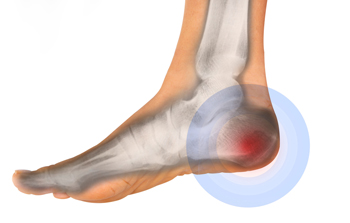
A broken heel bone, or calcaneus fracture, is a serious foot injury that often results from high-impact trauma, such as falling from a height or being in a car accident. In some cases, athletes who engage in repetitive stress, like long-distance running, may develop a stress fracture in the heel. Signs of a broken heel bone include intense heel pain, swelling, bruising, and an inability to walk. A podiatrist will perform a thorough exam, which may include imaging tests, to determine the severity of the fracture. If the bone fragments remain in proper position, casting and immobilization may be sufficient. However, when the bone is significantly displaced or if the fracture is open, surgery may be necessary. This typically involves repositioning the bone and securing it with plates and screws. In the most severe cases, a fusion between the heel and ankle bones may be required to stabilize the foot. If you have extreme heel pain and fear it may be broken, it is suggested that you make an immediate appointment with a podiatrist for an exam, diagnosis, and appropriate treatment.
Many people suffer from bouts of heel pain. For more information, contact Dr. Richard DiMario of Maine. Our doctor can provide the care you need to keep you pain-free and on your feet.
Causes of Heel Pain
Heel pain is often associated with plantar fasciitis. The plantar fascia is a band of tissues that extends along the bottom of the foot. A rip or tear in this ligament can cause inflammation of the tissue.
Achilles tendonitis is another cause of heel pain. Inflammation of the Achilles tendon will cause pain from fractures and muscle tearing. Lack of flexibility is also another symptom.
Heel spurs are another cause of pain. When the tissues of the plantar fascia undergo a great deal of stress, it can lead to ligament separation from the heel bone, causing heel spurs.
Why Might Heel Pain Occur?
Treatments
Heel pain should be treated as soon as possible for immediate results. Keeping your feet in a stress-free environment will help. If you suffer from Achilles tendonitis or plantar fasciitis, applying ice will reduce the swelling. Stretching before an exercise like running will help the muscles. Using all these tips will help make heel pain a condition of the past.
If you have any questions please contact our office located in York, ME . We offer the newest diagnostic and treatment technologies for all your foot and ankle needs.
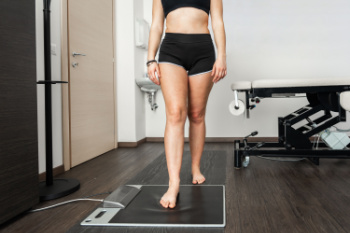
A biomechanical assessment of the feet and ankles evaluates how they function during movement. Podiatrists use this exam to identify issues like abnormal gait patterns, misalignment, or imbalances that may contribute to pain or injury. The assessment typically begins with a static evaluation, where a podiatrist examines foot posture, arch height, and weight distribution while standing. Next comes a dynamic assessment, analyzing how the feet move during walking or running. This may involve video gait analysis or pressure mapping technology. Joint mobility, muscle strength, and flexibility are also tested. Findings from the assessment help determine if orthotics, footwear changes, or strengthening exercises are needed. If you would like to better understand foot pain, injury prevention, or athletic performance enhancement, it is suggested that you see a podiatrist for a biomechanical assessment.
If you have any concerns about your feet, contact Dr. Richard DiMario from Maine. Our doctor can provide the care you need to keep you pain-free and on your feet.
Biomechanics in Podiatry
Podiatric biomechanics is a particular sector of specialty podiatry with licensed practitioners who are trained to diagnose and treat conditions affecting the foot, ankle and lower leg. Biomechanics deals with the forces that act against the body, causing an interference with the biological structures. It focuses on the movement of the ankle, the foot and the forces that interact with them.
A History of Biomechanics
Modern technological improvements are based on past theories and therapeutic processes that provide a better understanding of podiatric concepts for biomechanics. Computers can provide accurate information about the forces and patterns of the feet and lower legs.
Understanding biomechanics of the feet can help improve and eliminate pain, stopping further stress to the foot.
If you have any questions please feel free to contact our office located in York, ME . We offer the newest diagnostic and treatment technologies for all your foot and ankle needs.

Ingrown toenails occur when the edge of a toenail grows into the surrounding skin, causing pain, redness, and swelling. The affected toe may become tender to the touch and appear inflamed. If left untreated, the area can become infected, and pus or drainage may develop. Most commonly, ingrown toenails affect the big toe, but they can occur on any toe. This condition is often caused by improper nail trimming, wearing ight footwear, or trauma to the toe. People with curved nails, or conditions like diabetes or poor circulation, are more prone to developing ingrown toenails. The pain can range from mild discomfort to severe, making walking or wearing shoes difficult. A podiatrist can help by carefully removing the ingrown portion of the nail, providing antibiotics if an infection is present, and offering advice on proper nail care and footwear. If you have a painful ingrown toenail, it is suggested that you schedule an appointment with a podiatrist.
Ingrown toenails can become painful if they are not treated properly. For more information about ingrown toenails, contact Dr. Richard DiMario of Maine. Our doctor can provide the care you need to keep you pain-free and on your feet.
Ingrown Toenails
Ingrown toenails occur when a toenail grows sideways into the bed of the nail, causing pain, swelling, and possibly infection.
Causes
Prevention
Because ingrown toenails are not something found outside of shoe-wearing cultures, going barefoot as often as possible will decrease the likeliness of developing ingrown toenails. Wearing proper fitting shoes and using proper cutting techniques will also help decrease your risk of developing ingrown toenails.
Treatment
Ingrown toenails are a very treatable foot condition. In minor cases, soaking the affected area in salt or antibacterial soaps will not only help with the ingrown nail itself, but also help prevent any infections from occurring. In more severe cases, surgery is an option. In either case, speaking to your podiatrist about this condition will help you get a better understanding of specific treatment options that are right for you.
If you have any questions please feel free to contact our office located in York, ME . We offer the newest diagnostic and treatment technologies for all your foot and ankle needs.

Arthritis in the toes can cause significant discomfort and impact mobility. Swelling is a common symptom, often making shoes feel tighter and causing tenderness with pressure. Soreness may be persistent or worsen with activity, leading to difficulty walking or standing for long periods. Restricted movement can develop as the joints become stiff, making it challenging to bend or flex the toes. Additionally, redness and warmth surrounding the affected joints may indicate inflammation, often accompanied by pain. In more advanced cases, deformities such as bunions or claw toes can occur, altering the foot’s natural shape. The most common types of arthritis affecting the toes include osteoarthritis, rheumatoid arthritis, and gout. If you have toe pain, it is suggested that you confer with a podiatrist who can offer a proper diagnosis and treatment.
Toe pain can disrupt your daily activities. If you have any concerns, contact Dr. Richard DiMario of Maine. Our doctor can provide the care you need to keep you pain-free and on your feet.
What Causes Toe Pain?
Most severe toe pain is caused due to a sports injury, trauma from dropping something heavy on the toe, or bumping into something rigid. Other problems can develop over time for various reasons.
Toe pain can be caused by one or more ailments. The most common include:
When to See a Podiatrist
Diagnosis
In many cases the cause of toe pain is obvious, but in others, a podiatrist may want to use more advanced methods to determine the problem. These can range from simple visual inspections and sensation tests to X-rays and MRI scans. Prior medical history, family medical history, and any recent physical traumatic events will all be taken into consideration for a proper diagnosis.
Treatment
Treatments for toe pain and injuries vary and may include shoe inserts, padding, taping, medicines, injections, and in some cases, surgery. If you believe that you have broken a toe, please see a podiatrist as soon as possible.
If you have any questions please feel free to contact our office located in York, ME . We offer the newest diagnostic tools and technology to treat your foot and ankle needs.
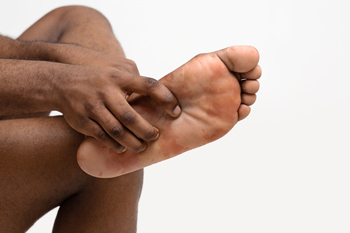
Pain on the bottom of the foot while walking can result from several conditions affecting the nerves, bones, and soft tissues. Metatarsalgia occurs when the ball of the foot experiences excessive pressure, leading to inflammation and discomfort. Peripheral neuropathy, often linked to diabetes, causes nerve damage that leads to tingling, burning, or sharp pain. Morton's neuroma is a thickening of nerve tissue between the toes, creating a sensation similar to stepping on a pebble. Additionally, sesamoiditis, an inflammation of the small sesamoid bones beneath the big toe, can cause pain with every step. If you have foot pain, it is suggested that you consult a podiatrist who can determine what the cause is, and offer effective relief and treatment solutions.
Foot Pain
Foot pain can be extremely painful and debilitating. If you have a foot pain, consult with Dr. Richard DiMario from Maine. Our doctor will assess your condition and provide you with quality foot and ankle treatment.
Causes
Foot pain is a very broad condition that could be caused by one or more ailments. The most common include:
Diagnosis
To figure out the cause of foot pain, podiatrists utilize several different methods. This can range from simple visual inspections and sensation tests to X-rays and MRI scans. Prior medical history, family medical history, and any recent physical traumatic events will all be taken into consideration for a proper diagnosis.
Treatment
Treatment depends upon the cause of the foot pain. Whether it is resting, staying off the foot, or having surgery; podiatrists have a number of treatment options available for foot pain.
If you have any questions, please feel free to contact our office located in York, ME . We offer the newest diagnostic and treatment technologies for all your foot care needs.

Foot pain in children can result from overuse, wearing improper footwear, or underlying conditions affecting the feet, toes, or ankles. One of the most common causes of foot pain in children is Sever’s disease, medically known as calcaneal apophysitis, which occurs when repeated stress on the heel’s growth plate leads to inflammation. This condition often affects children ages eight to 14 involved in running or jumping sports like soccer or basketball. Another cause of childhood foot pain is Achilles tendonitis. This develops when the Achilles tendon becomes inflamed after increased activity levels, leading to heel pain, swelling, and difficulty walking. Foot fractures are another concern, particularly for children participating in high-impact sports. Fractures can cause intense pain, bruising, and an inability to bear weight. If left untreated, any of these conditions may worsen and interfere with your child’s daily activities. If your child complains of foot pain, especially after activity, it is suggested that you schedule an appointment with a podiatrist for an exam, diagnosis, and treatment options.
The health of a child’s feet is vital to their overall well-being. If you have any questions regarding foot health, contact Dr. Richard DiMario of Maine. Our doctor can provide the care you need to keep you pain-free and on your feet.
Tips for Keeping Children's Feet Healthy
If you have any questions, please feel free to contact our office located in York, ME . We offer the newest diagnostic and treatment technologies for all your foot care needs.
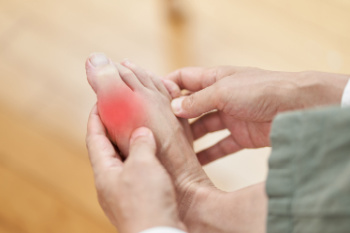
Gout, a form of arthritis caused by uric acid buildup in the joints, can be influenced by temperature and humidity. Cold temperatures may trigger gout attacks by causing uric acid to crystallize in the joints, leading to sudden pain and inflammation. High humidity can contribute to dehydration, which reduces the body’s ability to flush out uric acid, increasing the risk of flare-ups. Managing gout involves staying hydrated, maintaining a balanced diet, and avoiding triggers like alcohol and purine-rich foods. Wearing warm socks in cold weather and staying cool in hot, humid conditions can help prevent attacks. A podiatrist can help by recommending footwear and insulation strategies to protect joints from cold exposure. They may also provide guidance on proper hydration and lifestyle adjustments to minimize the impact of humidity. If gout affects your mobility or causes frequent flare-ups, it is suggested that you consult a podiatrist who can help you improve your comfort and overall foot health.
Gout is a foot condition that requires certain treatment and care. If you are seeking treatment, contact Dr. Richard DiMario from Maine. Our doctor will treat your foot and ankle needs.
What Is Gout?
Gout is a type of arthritis caused by a buildup of uric acid in the bloodstream. It often develops in the foot, especially the big toe area, although it can manifest in other parts of the body as well. Gout can make walking and standing very painful and is especially common in diabetics and the obese.
People typically get gout because of a poor diet. Genetic predisposition is also a factor. The children of parents who have had gout frequently have a chance of developing it themselves.
Gout can easily be identified by redness and inflammation of the big toe and the surrounding areas of the foot. Other symptoms include extreme fatigue, joint pain, and running high fevers. Sometimes corticosteroid drugs can be prescribed to treat gout, but the best way to combat this disease is to get more exercise and eat a better diet.
If you have any questions please feel free to contact our office located in York, ME . We offer the newest diagnostic and treatment technologies for all your foot and ankle needs.
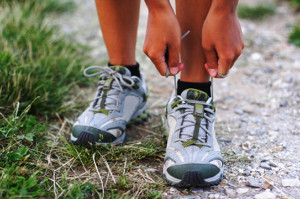
Trail running shoes are designed for off-road running, offering essential features to enhance performance and comfort. One key feature is waterproofing, which helps keep feet dry in wet conditions, preventing discomfort and blisters during rainy runs or when crossing streams. For runners with wider feet, wide-fit trail running shoes provide extra space, ensuring a more comfortable fit and reducing pressure on the toes. Mud shoes are another important type of trail running shoe, equipped with specialized traction to handle slippery and muddy trails. These shoes typically have deeper treads that provide better grip and stability, preventing slips. Whether running through wet terrain, navigating rocky paths, or tackling muddy routes, the right trail running shoes ensure durability, support, and comfort for every adventure. If you have sustained a foot injury while trail running, it is suggested that you consult a podiatrist who can offer effective relief tips, and guide you on the correct shoes to wear.
If you are a runner, wearing the right running shoe is essential. For more information, contact Dr. Richard DiMario from Maine. Our doctor can provide the care you need to keep you pain-free and on your feet.
Choosing the Right Running Shoe for Your Foot Type
To increase performance and avoid the risk of injury, it is important to choose the right running shoe based on your foot type. The general design of running shoes revolves around pronation, which is how the ankle rolls from outside to inside when the foot strikes the ground.
If you have any questions please feel free to contact our office located in York, ME . We offer the newest diagnostic and treatment technologies for all your foot and ankle needs.